七言排律 都江堰千古水利工程赞
蒲文强
2021年8月7日
千古工程都江堰[1],二千二百七十年[2]。
李冰父子[3]真英雄,农田浇灌铸源泉。
历久弥坚神圣事,世界文化列遗产。
分水魚嘴[4]飞沙堤[5],宝瓶口[6]中浪花翻。
三十县润千万亩[7],川西坝子皆良田。
沃野千里腾细浪,天府之国春满园。
伏龙观[8]前龙昂首,二王庙[9]中英灵显。
安澜桥[10]上飞彩虹,英雄永留天地间。
离堆公园[11]千般美,玉垒关[12]前呈威严。
灵岩寺[13里香火旺,玉女峰[14]上舞翩跹。
普照寺[15]中佛佑民,翠月湖16]上泛金澜。
蜀郡太守垂千古,都江堰拓天地宽。

注释:
[1]四川省成都市都江堰,是公园前约256年-251年,由当时的蜀郡太守李冰父子率领人民,经过6年时间建成。
[2]都江堰自公园前251年建成,距今已有2272年。
[3] 蜀郡太守李冰(公元前3世纪),战国时期杰出的水利工程专家。约在公元前256年—前251年,他被秦昭王任命为蜀郡的地方长官太守。当时纵贯四川成都西北灌县的岷江,水患非常严重。李冰一到任,就决心进行治水工作。李冰和他的儿子二郎经过实地勘测,制定方案,领导人民修筑了著名的都江堰水利工程。李冰父子又定出了每年淘滩修堰的制度,总结出“深淘滩,低作堰”的调节水流的原则,保证了都江堰防洪灌溉作用的发挥。都江堰的修成,收益至今,使成都平原成为“沃野千里”的富庶之地,获得“天府之国”的美称。
[4] 李冰父子在家都江堰分水魚嘴的基本设计、建设规划是:建成将上游奔流的江水一分为二:西边称为外江,它沿岷江河雨顺流而下;东边称为内江,它流入宝瓶口。由于内江窄而深,外江宽而浅,这样枯水季节水位较低,则60%的江水流入河床低的内江,保证了成都平原的生产生活用水;而当洪水来临,由于水位较高,于是大部分江水从江面较宽的外江排走,这种自动分配内外江水量的设计就是所谓的“四六分水”。 由于分水堰前端的形状好像一条鱼的头部,所以被称为“分水鱼嘴”。
[5] 都江堰飞沙堰位于金刚堤南端成一低矮的人工沙堤(实为一潜坝),为什么飞沙堰要修在金刚堤南端?这是因为内江流水遇到虎头岩的撞击后自然形成涡流,这股涡流径直向西南方向(现在的飞沙堰位置)流去,多余洪流和泥沙也随之泄入外江,可见这位置正是保证内江洪流和泥沙排泄的最佳方向和位置,因此,决定在金刚堤南端修建飞沙堰。飞沙堰的作用一是起排洪排沙作用,二是起挡水作用,保证内江水位始终保持在一定的高度上,以保证成都平原灌溉有足够的水量,如无此坝,内江水会大部分泄入外江。
[6]都江堰宝口瓶 是在湔山(今名灌口山、玉垒山)伸向岷江的长脊上凿开的一个口子。它是人工凿成控制内江进水的咽喉,因它形似瓶口而功能奇特,故名宝瓶口。留在宝瓶口右边的山丘,因与其山体相离,故名离堆。离堆在开凿宝瓶口以前,是湔山虎头岩的一部分。
[7]都江堰灌溉面积达到30多个县、一千多万亩。
[8] 传说李冰父子治水时曾制服岷江孽龙,将其锁于离堆下伏龙潭中,后人依此立祠祭祀;北宋初改名伏龙观,始以道士掌管香火。
[9] ,二王庙把修建都江堰的传统治水要诀,都铭刻在石碑和墙壁上,在庙里形成了都江堰治水博物馆,给后人留下了珍贵的历史文物。
[10] 安澜桥是我国著名的五大古桥之一,横跨在内江和外江的分水处,是一座名播中外的古索桥。最早称绳桥或竹滕桥,这与它的材料有关。到了宋代,改称“评事桥”。明朝末年毁于战火。清嘉庆八年(公元1803年),何先德夫妇倡议修建竹索桥,以木板面,旁设扶栏,两岸行人可以安渡狂澜,故更名“安澜桥”;民间为纪念何氏夫妇,又称之为“夫妻桥”,何先生修的桥因无栏杆所以一人摔下水摔死,被官员处死,妻子为了为丈夫雪冤想尽办法修了栏杆。全长约500米,在鱼嘴处建立外江水闸,把桥下移100多米,将竹索改为钢索,乘托缆索的木桩桥墩改为钢筋混凝土桩,桥身也缩为240米。远看如飞虹挂空,又像渔人晒网,形式十分别致。
[11] 离堆公园这个区域,在没有修建都江堰水利工程以前,和现在对面的玉垒山是连在一起的。离堆公园占地90余亩,1932年建成,是成都市都江堰景点之一,风景独特,历史悠久。
[12]都江堰玉垒关用条石和泥浆砌成,长13.29米,宽6.86米,高6.2米。关门联语十分精妙“玉垒峙雄关,山色平分江左右;金川流远派,水光清绕岸东西”。它是古代川西平原的要隘,也是千余年来古堰旁的一处胜景,故称“川西锁钥”。
[13] 灵岩山的地理位置独特,再加上它的山势秀美,满山被高大的乔木所覆盖,使得灵岩山显得格外幽静,凉快。
[14] 都江堰玉女峰,是景区独具特色景点,山清水秀,人杰地灵。历来就流传着许多美好的民间传说,使都江堰风光更染上一层神奇的色彩,仅都江堰“玉女”就有很多历史记载,“玉女”古称“神女”,亦称“美女”。其山峰若亭亭玉立的美女,故得玉女峰美名。
[15] 普照寺早期叫“金花庙”,供奉的是蓥华祖师,是由一座家族弃祠改建而成的贫穷小庙,“无食以养僧,无房以妥神”。就是这样一个小小的穷庙子,却在乾隆三十年以后,突然大兴土木,广置田产,到道光二十九年前后,经百余年间的连续扩建,普照寺一跃成为川西四大丛林之一,远近闻名。
[16] 翠月湖位在江堰市境内,翠月湖总面积800余亩,其中湖泊面积200多亩,森林、果园、草坪约500多亩。位于青城山山麓的岷江河畔,距都江堰8公里,这里属亚热带湿润气候,常年最低气温为4.6 ℃,最高气温为34℃,年平均气温15.2 ℃,是理想的避暑胜地。

Seven character platoon • Dujiangyan praise
Pu Wenqiang
August 7, 2021
The Millennium Project Dujiangyan [1], 2270 years [2].
Li Bing and his son [3] are heroes. Farmland irrigation casts a source.
It is a sacred thing with a long history and is listed as a world cultural heritage.
The water diversion fish mouth [4] the flying sand dike [5], and the waves in the bottle mouth [6] turn over.
Thirty counties run ten million mu [7], and Bazi in Western Sichuan is a good field.
The fertile field is full of fine waves, and the land of abundance is full of spring.
The dragon heads up in front of the Fulong temple [8] and the heroes in the Erwang temple [9].
Rainbow flies on Anlan bridge [10], and heroes stay in heaven and earth forever.
Lidui Park [11] is beautiful, and Yulei pass [12] is majestic.
Incense is flourishing in Lingyan temple [13], and the jade girl peak [14] is dancing lightly.
Buddha bless the people in Puzhao temple [15], and golden billows on Cuiyue Lake [16].
The prefect of Shu County hangs down for thousands of years, and Dujiangyan expands the world.
notes:
[1] Dujiangyan, Chengdu, Sichuan Province, was built in about 256-251 years before the park. It was led by the then governor of Shu County, Li Bing and his son. It took six years to build it.
[2] Dujiangyan was built in 251 BC, 2272 years ago.
[3] Li Bing, governor of Shu county (3rd century BC), was an outstanding expert in water conservancy engineering during the Warring States period. From about 256 BC to 251 BC, he was appointed as the prefect of Shu County by King Zhao of Qin Dynasty. At that time, the Minjiang River, which runs through Guanxian County in the northwest of Chengdu, Sichuan Province, was seriously flooded. As soon as Li Bing took office, he was determined to carry out water control. Li Bing and his son Erlang made plans through field survey and led the people to build the famous Dujiangyan water conservancy project. Li Bing and his son also worked out the system of scouring beaches and building weirs every year, and summarized the principle of "deep scouring beaches and low weirs", which ensured the flood control and irrigation function of Dujiangyan. The completion of Dujiangyan has made Chengdu plain a "fertile land with thousands of miles" and won the reputation of "land of abundance".
[4] The basic design and construction plan of Li Bing and his son's fish mouth in Dujiangyan are as follows: the river running upstream will be divided into two: the west is called Waijiang, which flows down the Minjiang River; The East is called Neijiang River, which flows into the mouth of the Aquarius. As the inner river is narrow and deep and the outer river is wide and shallow, so the water level is low in dry season, 60% of the river water flows into the inner river with low riverbed, ensuring the production and domestic water in Chengdu Plain; When the flood comes, due to the high water level, most of the river water is discharged from the wide outer river. This design of automatic distribution of water volume between the inner and outer rivers is the so-called "four or six water sharing". Because the shape of the front end of the diversion weir is like the head of a fish, it is called "diversion fish mouth".
[5] Dujiangyan Feisha weir is located at the south end of the Vajra dike, forming a low artificial sand dike (actually a submerged dam). Why should Feisha weir be built at the south end of the Vajra dike? This is because the inner river water naturally forms a vortex after encountering the impact of hutouyan. This vortex flows directly to the Southwest (the current position of Feisha weir), and the excess flood and sediment also discharge into the outer river. It can be seen that this position is the best direction and position to ensure the flood and sediment discharge of the inner river. Therefore, it is decided to build Feisha weir at the south end of Jingang dike. The function of Feisha weir is to discharge flood and sediment, and to retain water, so as to ensure that the water level of the inner river is always maintained at a certain height, so as to ensure sufficient water for irrigation in Chengdu Plain. Without this dam, most of the water from the inner river will be discharged into the outer river.
[6] Dujiangyan Baokou bottle was cut on the long ridge of Jianshan (now Guankou mountain and Yulei mountain) extending to the Minjiang River. It is artificially chiseled into a throat to control the inflow of Neijiang River. It is named baopingkou because it looks like a bottle mouth and has unique functions. The hill on the right of the Aquarius mouth is named Lidui because it is separated from the mountain. Lidui was a part of Hutou rock in Jianshan before the opening of the treasure bottle.
[7] The irrigation area of Dujiangyan has reached more than 30 counties and more than 10 million mu.
[8] It is said that Li Bing's father and son subdued the evil dragon of Minjiang River and locked it in the lying dragon pond under Lidui. Later generations set up ancestral temples to offer sacrifices; In the early Northern Song Dynasty, it was renamed fulongguan, and Taoist priests were in charge of incense.
[9] , Erwang Temple engraves the traditional key to water control of Dujiangyan on stone tablets and walls, forming a Dujiangyan water control Museum in the temple, leaving precious historical relics for future generations.
[10] Anlan bridge is one of the five famous ancient bridges in China. It spans the watershed between the inner river and the outer river. It is a famous ancient cable bridge at home and abroad. It was first called rope bridge or Zhuteng bridge, which is related to its material. In the Song Dynasty, it was renamed "comment bridge". It was destroyed by war in the late Ming Dynasty. In the eighth year of Jiaqing in the Qing Dynasty (1803 AD), Mr. and Mrs. he Xiande proposed to build a bamboo cable bridge with a wooden surface and handrails beside it, so that pedestrians on both sides of the Strait can safely cross the raging waves, so they renamed it "Anlan bridge"; In order to commemorate Mr. and Mrs. he, it is also called "husband and wife bridge". Mr. He built the bridge without railings, so one fell into the water and died, and was executed by officials. His wife tried every means to repair the railings for her husband's grievance. With a total length of about 500 meters, Waijiang sluice is established at Yuzui, the bridge is moved down more than 100 meters, the bamboo cable is changed into steel cable, the wooden pile pier supporting the cable is changed into reinforced concrete pile, and the bridge body is also reduced to 240 meters. From a distance, it looks like a flying rainbow hanging in the air and a fisherman drying his net. The form is very unique.
[11] Before Dujiangyan water conservancy project was built, Lidui Park was connected with Yulei mountain opposite now. Lidui Park, covering an area of more than 90 mu, was built in 1932. It is one of the scenic spots of Dujiangyan in Chengdu, with unique scenery and a long history.
[12] Yulei pass in Dujiangyan is made of stone and mud. It is 13.29m long, 6.86m wide and 6.2m high. Close the door couplet is very subtle: "Yulei stands at Xiongguan, and the mountains divide the river equally; Jinchuan flows far away, with clear water and light around the shore and "East and west". It is not only a pass in the ancient West Sichuan plain, but also a scenic spot beside the ancient weir for more than a thousand years, so it is called "West Sichuan lock key".
[13] Lingyan mountain's unique geographical location, coupled with its beautiful mountains, covered with tall trees, makes Lingyan mountain particularly quiet and cool.
[14] Dujiangyan Yunv peak is a unique scenic spot with beautiful mountains and rivers and outstanding people. There have always been many beautiful folklores, which make Dujiangyan scenery more magical. There are many historical records of Dujiangyan's "jade girl", which was called "goddess" and "beauty" in ancient times. Its peak is like a graceful beauty, so it is known as Yunv peak.
[15] In the early days of Puzhao temple, it was called "Jinhua Temple", which worshipped the founder Yinghua. It was a poor Temple rebuilt from a family abandoned temple. "There is no food to support monks and no room to protect gods". It was such a small poor temple, but after 30 years of Qianlong's reign, there was a sudden large-scale construction and wide purchase of farmland. Around the 29th year of Daoguang, after more than 100 years of continuous expansion, Puzhao Temple became one of the four jungles in Western Sichuan and was well-known.
[16] Cuiyue lake is located in Jiangyan City, with a total area of more than 800 mu, including more than 200 mu of Lake area and more than 500 mu of forest, orchard and lawn. Located on the Bank of Minjiang River at the foot of Qingcheng Mountain, 8km away from Dujiangyan, it has a subtropical humid climate. The annual minimum temperature is 4.6 ℃, the maximum temperature is 34 ℃, and the annual average temperature is 15.2 ℃. It is an ideal summer resort.





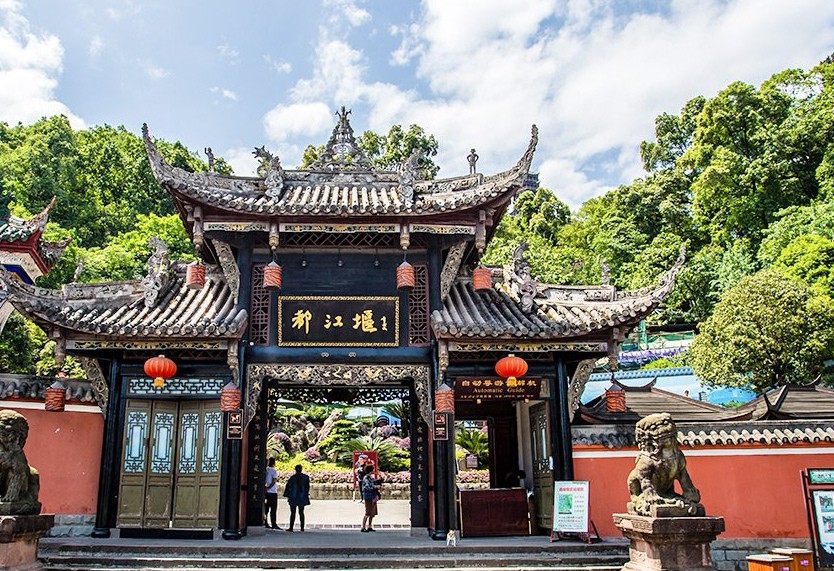
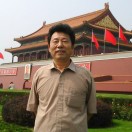
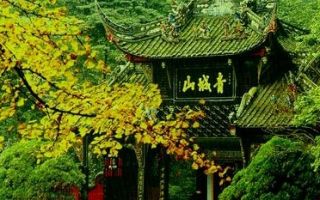
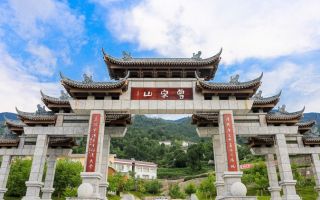

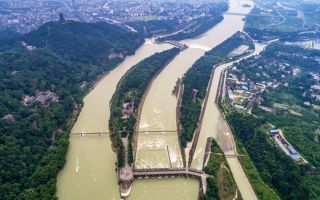
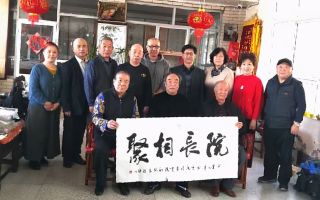

蒲文强